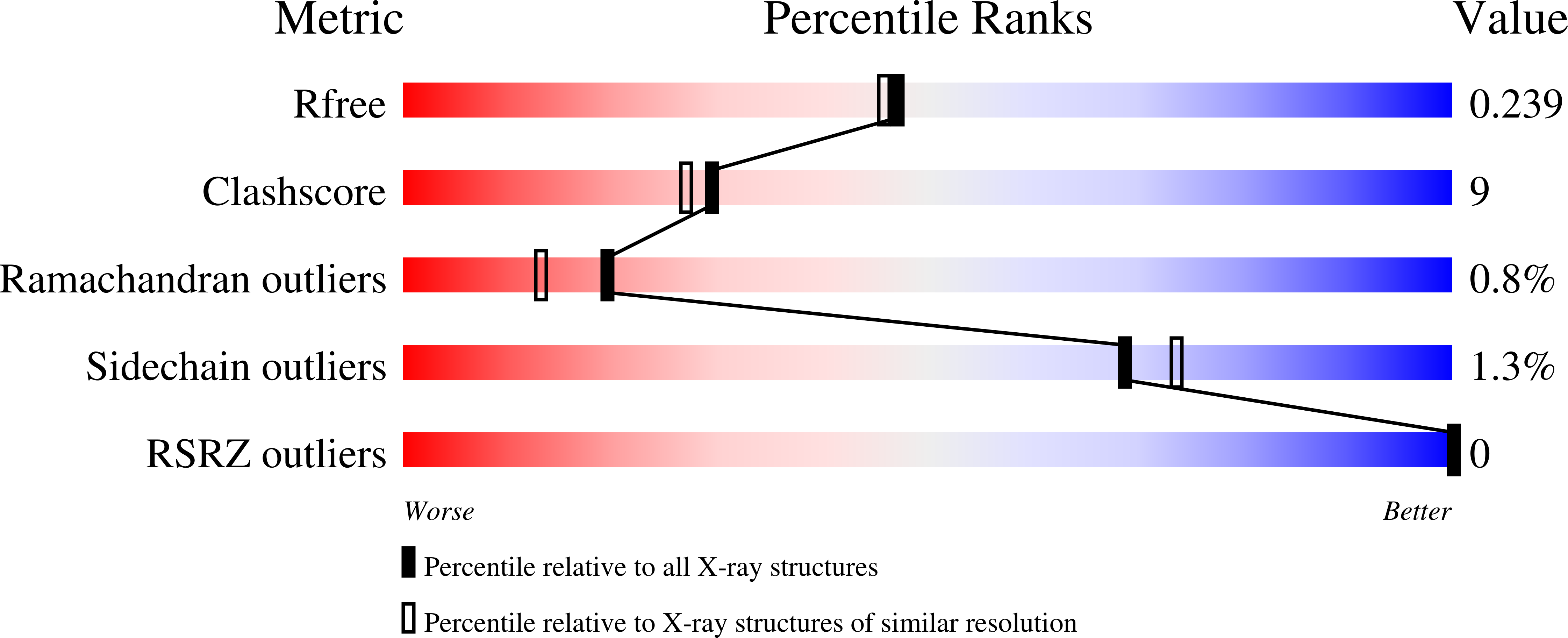Kinetic and structural properties of disulfide engineered phospholipase a(2): insight into the role of disulfide bonding patterns.
Yu, B.Z., Pan, Y.H., Janssen, M.J.W., Bahnson, B.J., Jain, M.K.(2005) Biochemistry 44: 3369-3379
- PubMed: 15736947
- DOI: https://doi.org/10.1021/bi0482147
- Primary Citation of Related Structures:
1Y6O, 1Y6P - PubMed Abstract:
The family of secreted 14 kDa phospholipase A(2) (PLA2) enzymes have a common motif for the catalytic site but differ in their disulfide architecture. The functional significance of such structural changes has been analyzed by comparing the kinetic and spectroscopic properties of a series of disulfide mutants engineered into the sequence of pig pancreatic IB PLA2 to resemble the mammalian paralogues of the PLA2 family [Janssen et al. (1999) Eur. J. Biochem. 261, 197-207, 1999]. We report a detailed comparison of the functional parameters of pig iso-PLA2, as well as several of the human homologues, with these disulfide engineered mutants of pig IB PLA2. The crystal structure of the ligand free and the active site inhibitor-MJ33 bound forms of PLA2 engineered to have the disulfide bonding pattern of group-X (eng-X) are also reported and compared with the structure of group-IB and human group-X PLA2. The engineered mutants show noticeable functional differences that are rationalized in terms of spectroscopic properties and the differences detected in the crystal structure of eng-X. A major difference between the eng-mutants is in the calcium binding to the enzyme in the aqueous phase, which also influences the binding of the active site directed ligands. We suggest that the disulfide architecture of the PLA2 paralogues has a marginal influence on interface binding. In this comparison, the modest differences observed in the interfacial kinetics are attributed to the changes in the side chain residues. This in turn influences the coupling of the catalytic cycle to the calcium binding and the interfacial binding event.
Organizational Affiliation:
Department of Chemistry & Biochemistry, University of Delaware, Newark, Delaware 19716, USA.

















